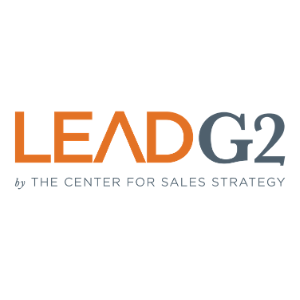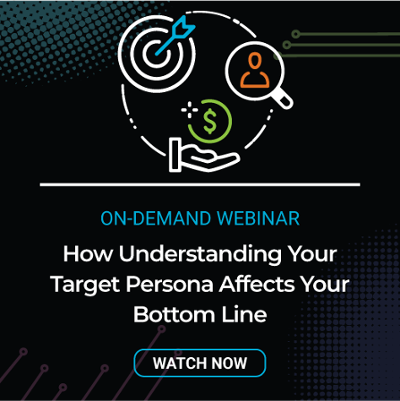What is Inbound Sales Prospecting?
When we published, “What is an Inbound Sales Lead?” it prompted some discussion about lead definitions. How do you research inbound leads and what...
3 min read
 LeadG2
:
March 16, 2023
LeadG2
:
March 16, 2023


Some business owners think that just because they’ve started using content marketing, they will instantly get more sales. Or, they might think that just because they’re publishing blogs a few times a month, they can expect qualified leads to come flowing into their website. I’ve even met a few in my life who expected that just because their website went live—no announcements, no other attempts at outreach—they’d suddenly be flooded with more business than they knew what to do with.
Oh, my sweet summer children.
Generating leads isn’t as simple as turning on your website and watching the leads come immediately to your website, asking for pricing, and begging to become your customers. It requires a lead generation strategy that supports your plans.
To develop a robust, long-lasting lead generation strategy, you’ll first need to ask yourself six critical questions that relate to the five Ws and H that often come up in the content development process.
 1. Who is Your Target Persona?
1. Who is Your Target Persona? Identifying who your target persona is will make it easier to develop content that caters to their needs and bring them in as leads. Developing these semi-fictional representations of your customers will include reviewing data from your existing customers and a few educated guesses to fill in the blanks.
Oftentimes, getting that data includes either reviewing information you have in your CRM, surveying your customers directly or both. You’ll likely find your business has at least two or three target personas, if not a few more, depending on your industry.
Most people search for products or services because they have a problem they’re trying to solve or a “job” they need that product or service to do for them.
One of the best ways to answer this question is to look at the questions your customers asked before you closed the sale. They may have asked about certain product features or services you offer. Perhaps they even had some objections or concerns they brought up during the sales process.
Those questions and objections should inspire the first content you publish. The sooner you address those common concerns, the sooner those visitors who may have had reservations about working with you will convert into leads.
The process of determining this is known as lead scoring. Some parts of the lead scoring process can be done automatically—for example, HubSpot has an algorithm you can set up to mark leads as having a higher score based on which forms they fill out, how they’ve been engaging with your content, if they’ve replied to your sales emails and many other factors.
However, some parts of the lead scoring process can and should be done manually by someone on your team who will act as the designated lead qualifier. This person can score leads based on where they came through your website, which form they filled out, and whether the lead is ultimately ready to be handed off as a prospect, or sales qualified lead, or still needs nurturing as a marketing qualified lead.
Follow-up question: Why can’t I just post it to my blog?
Your blog should be just the beginning of your content distribution chain. Beyond that, you can and should post it to your organization’s social media channels, promote it in your marketing emails, add it to industry-related LinkedIn groups, and even offer to cross-post it with a link to the original post on other industry-oriented websites if you’re able.
The latter option is probably the hardest to achieve, but it also holds a lot of weight for building your website’s domain authority. Make sure your content is relevant to the third-party website’s requirements and audience, but always make sure the content links back to your organization whenever possible.
Arguably, this question is the most important one of all. Knowing the answer to this question will allow all parts of your organization to be aligned on the value of your products and services, which is critical for everyone from marketing to sales to your customer service team.
A common answer we see from clients is that their customer service is second to none. Go beyond that—why is your organization’s customer service better than all of your competitors who also pride themselves on their customer service? What do you offer that they don’t?
Your answers here will help you determine your unique selling proposition, which can be used in every facet of your lead generation strategy.
Simply tracking whether or not you got more leads after implementing your strategy isn’t enough to tell whether it’s working. For that, you’ll need to drill deeper and set clear, trackable goals for your key performance indicators (KPIs).
Some KPIs to follow for your lead generation strategy include:
Session to contact rate. This is the number of new contacts divided by your number of website sessions. A healthy session to contact rate can vary depending on your industry, your amount of traffic, and other factors around your site behavior.
SQL conversion rate. This is the percentage of new contacts who became sales qualified leads.
Number of closed won deals. This one’s pretty obvious—how many of your website visitors ultimately turned into customers
There are numerous metrics that you’ll want to track month over month, quarter over quarter, and year over year. Regardless, tracking these metrics will be critical to determining the progress and success of your lead generation strategy.
Lead generation strategies require time, effort, and careful planning to implement correctly. However, asking these core questions will help you build an effective plan that brings in qualified leads that your sales team can nurture into customers that will stay with your business for years to come.

When we published, “What is an Inbound Sales Lead?” it prompted some discussion about lead definitions. How do you research inbound leads and what...

Developing a solid inbound marketing and content strategy is something that most companies struggle with. In fact, a study from Ascend2 and its...

Wouldn't it be fantastic if you had a steady stream of leads coming into your sales department? Wouldn't it be even better if this steady stream were...